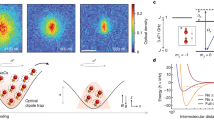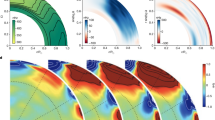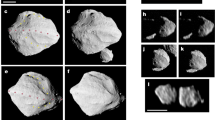Abstract
SEVERAL authors have recently argued for the necessity of decay of the surface magnetic field of neutron stars with a characteristic time of a few million years in order to explain the details of the observed pulsar sample. Gunn and Ostriker1 have summarized these arguments, pointing to the three empirical pieces of evidence which imply such decay: (1) the scarcity of long period pulsars, (2) the apparent decrease in surface magnetic field with age, and (3) the decrease in pulsed radio luminosity with age.
This is a preview of subscription content, access via your institution
Access options
Subscribe to this journal
Receive 51 print issues and online access
$199.00 per year
only $3.90 per issue
Buy this article
- Purchase on Springer Link
- Instant access to full article PDF
Prices may be subject to local taxes which are calculated during checkout
Similar content being viewed by others
References
Gunn, J. E., and Ostriker, J. P., Astrophys. J., 160, 979 (1970).
Setti, G., and Woltjer, L., Astrophys. J. Lett., 159, L87 (1970).
Pacini, F., Nature, 216, 567 (1967).
Ostriker, J. P., and Gunn, J. E., Astrophys. J., 157, 1395 (1969).
Goldreich, P., and Julian, W., Astrophys. J., 157, 869 (1969).
Maran, S. P., and Modali, S. B., Earth and Extraterrestrial Sciences (in the press).
Author information
Authors and Affiliations
Rights and permissions
About this article
Cite this article
HOLT, S., RAMATY, R. Pulsar Distributions without Magnetic Decay. Nature 228, 351–352 (1970). https://doi.org/10.1038/228351a0
Received:
Issue Date:
DOI: https://doi.org/10.1038/228351a0
Comments
By submitting a comment you agree to abide by our Terms and Community Guidelines. If you find something abusive or that does not comply with our terms or guidelines please flag it as inappropriate.



